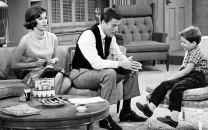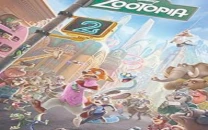The pursuit of beauty
Saeed Akhtar’s exhibition allows art lovers to see the process of a master at work.

Gone are the days when sketches were kept private. With the dazzling launch of Saeed Akhtar’s Sketchbook at the Ejaz Art Gallery in Lahore, art lovers and the general public are able to experience the process through which an idea transforms into a masterpiece.
Before Michelangelo painted the ceiling of the Sistine Chapel, he first had to make a sketch which would then be expanded into the ceiling mural. For any artist, sketches represent a rapidly done freehand drawing which an artist visualises in that specific moment. The idea then can be expanded into a larger canvas in which colour and emotion is added, thus making a finished product to be viewed by the public.
“Sketches are those initial thoughts that the artist gets when he sees something or imagines something,” said Fariha Asghar, an art student and a fan of Saeed Akhtar’s drawings. “It’s like when a poet thinks of a verse and scribbles it on to a piece of paper, a sketch is that most imperfect aspect which leads to a masterpiece.”
Saeed Akhtar is widely known in art circles for meditatively drawn realist paintings which typically show human beings in their most innocent form. The exhibition, which includes 118 pieces of his work spanning the last five years, can be deconstructed to see what is actually going through the artist’s mind. The proactive subjects within his paintings range from horses to deeply guarded women and provide emotional relevance to each and every viewer.
“People say that Akhtar always draws women, but what he really draws is beauty,” said Maham Gull, a painter who has worked closely with Akhtar. “Technically, he is a master of drawing, imagination flows from his mind into his pen - he doesn’t even need to really size a model because his mind is so free.”
Gull explains that the process through which Akhtar makes masterpieces is the pursuit of finding beauty during a fleeting moment. Through this, countless stories grow about Saeed Akhtar’s artistic legend. For example, on one occasion Gull recounts that Akhtar had been passing by some area where he saw a nude man bathing in the canal, and that became a focal point for one of his sketches.
In the latest collection, one of the more interesting pieces includes a pencil self-portrait of the artist himself. The drawing is engaging, as the eyes and rugged features stare back at the viewer creating a sense of frightening intrusion. The whole concept seems unique as it leaves a sense of mystery.
This is precisely what the collection sketches provide the audience; it shows Akhtar in his most innocent state. For artists, providing their sketches means being exposed in their rawest forms.
“When you see the works like this, you see works of a master because every stroke is drawn with such precision,” said Zahra David, Ejaz Art Gallery’s Art Coordinator. “It’s rare for an artist to release such prolific amounts of work, and that too sketches.”
She explained that it had allowed students and art lovers to see the process of a master at work.
Akhtar, a simple looking man, told the crowd while launching the collection, “I have always shown finished products. I thought it was about time that the public saw the beginning, the initial phase.”
Speaking to The Express Tribune, Akhtar’s eyes lit up as he explained the process that goes into making sketches.
“It’s a very free process, you first just draw lines and out of those lines, some image takes form,” said Akhtar. “Sketches are things that artists don’t typically show, because a lot of things, such as weaknesses, can be exposed.”
Akhtar explains that it’s important for the public to understand art, only then can one truly appreciate the significance of the collection.
Published in The Express Tribune, May 16th, 2011.



















COMMENTS
Comments are moderated and generally will be posted if they are on-topic and not abusive.
For more information, please see our Comments FAQ